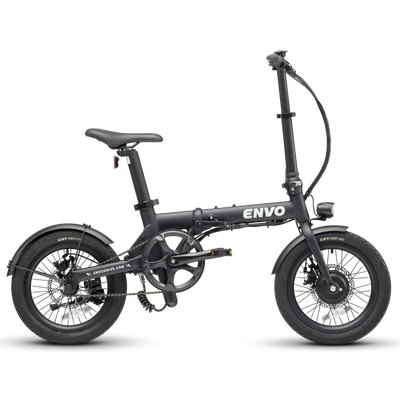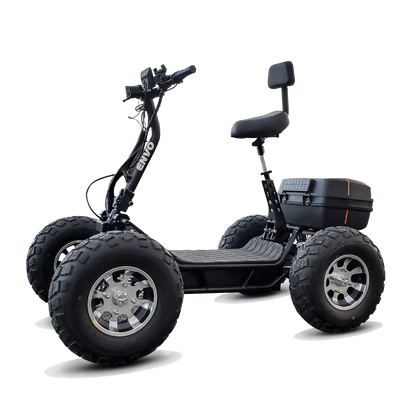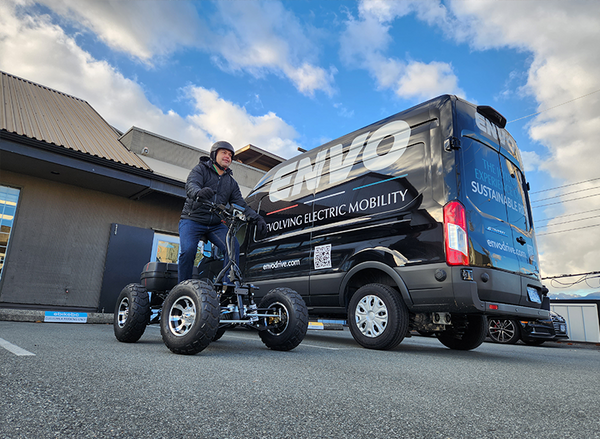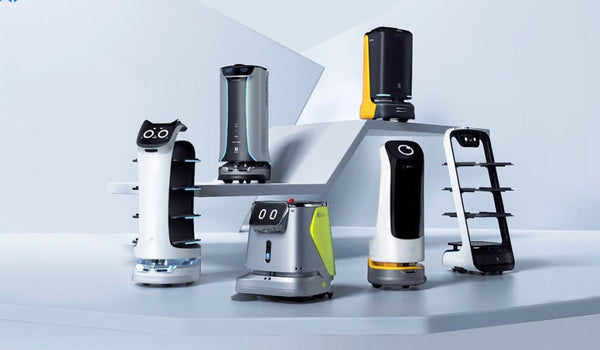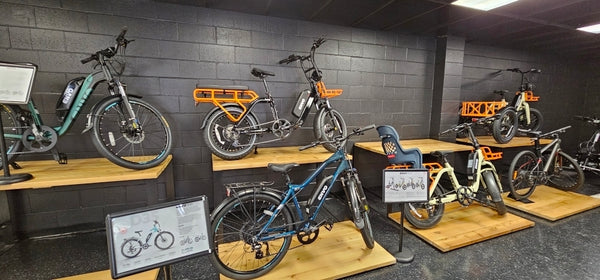Background
There is no denying that Canadians thoroughly enjoy bicycling all year round, not only to reduce their carbon footprint but also as a form of leisure and exercise. However, as most Canadians witness, Canadian weather across the nation at most times is unpredictable, cold, and wet for more than half the time.
Velomobile is the answer to this challenge, velomobile is a novel concept of human powered vehicle capable of providing weather, and collision resistance. Furthermore, velomobile are classified as bicycle hence they can use the bicycle lanes, you do not need license or insurance to operate them
Velomobile concepts are available in all shapes and sizes, some resemble a recumbent trike covered by a fairing, while others may look like a water droplet (due to its aerodynamic shape).
Problem/Opportunity
There have been dozens velomobile concepts in the past decades, some were just a prototype while other made it into production, but we have yet to see a product that supports a viable and successful business model. Hence, the challenge is not only to engineer a mature product but to make sure that it is feasible to sell this product.
At ENVO we believe if a product is reasonably prices, transportable, storable, and mature it would be enough to capture customer’s attention and become a successful product.
Goal
The goal here at ENVO is to design and manufacture an electric assist human powered velomobile with the following features.
- Lightweight enough to be powered by human power only, the electric power to be introduced to supplement human power.
- Compact and disassemble able so that it is easy to store and easy to transport.
- The velomobile must have a structure that is durable, strong, and not prone to rattle/noise.
- The bike needs to protect the operator from all-weather types, including freezing temperatures, rain, or snow.
- The velomobile needs to provide protection against collision.
- The velomobile must be classified as a pedal assist bicycle, hence able to ride in bike lanes.
ENVO velomobile uses plastics, inflatable material, and acrylic composite for the construction of the body. The goal here is to revolutionize the mobility solutions using the well establish manufacturing techniques, hence the effort will be focused on the design aspect and not at developing new manufacturing techniques. Furthermore, the velomobile must use as many parts from electric bicycles as possible, this includes hub motors, drivetrain, handlebars, pedal assist sensors etc. so that the product is not only low cost but also easy to service/repair for it to be sustainable.
Key Requirements
ENVO velomobile is envisioned as a serious contender when it comes to commute/transportation. It needs to combine the best features of a vehicle and bicycle and eliminate the disadvantages of both.
In keeping this requirement in mind, the following features are shortlisted:
- Watertight body capable of withstanding rain and snow but provide ample ventilation.
- Parts able to fit in boxes capable of shipping through courier service.
- 500W pedal assist power.
- 50km of range on a 480Wh battery.
- Body able to fit in any bike lane
- Enclosure spacious enough to be comfortable.
- Recumbent style chassis for stability and ergonomics.
- Include seating for a second passenger.
- The payload carrying capacity of a utility/cargo bike.
- The front screen to have anti-fog and water repellant design.
Constraints/Risks/Assumptions/Uncertainties
The technology of inflatable material is in infancy and present multiple designing and manufacturing challenges. Furthermore, the manufacturing is going to present a challenge due to its novel nature, while manufacturing techniques relating to plastics and acrylic may be mature, their combination may present a challenge.
Another challenge is to design a velomobile which is easy to disassemble. This limits the size of parts we are allowed to design and introduce necessity of folding in the design. The body of velomobile is not intended as solely weather protection and it must be collision resistant as well, hence the modular design presents a problem of structural integrity where non-permanent joints may not be as strong and may not present enough protection in case of a collision.
The biggest challenge in designing the velomobile is to control the cost of manufacturing, ENVO is only considering the manufacturing methods and processes which does not necessarily need economy of scale to be successful. We are well aware of the niche aspect of this product and that the first designs may not be able to sell in a mass scale, hence the design is developed with keeping this in mind.
Prototyping & Testing Phase 1

Our work in FY2020 centered around early-stage design considerations, including materials analysis, 2D and 3D modeling, and early prototyping. Material constraints on our product included low weight to accommodate shipping costs and to reduce power for license laws, high stiffness to ensure user safety and device durability, and high enough flexibility to absorb shock. The material also needed to accommodate some form of disassembly or compaction, and window materials needed to be transparent and scratch resistant. Materials analysis was performed to identify candidates including plexiglass, polycarbonate, and thick transparent scratch-resistant vinyl.
Many rounds of drawing and modelling iterations were carried out in order to visualize a form compatible with the inflatable concept developed during materials analysis. Brainstorming of visual models was extensive but allowed us to identify the materials.
Additional rounds of iterative 2D and 3D design were performed as concepts were evaluated and modified until a final concluded design was decided upon. The desired design centered around a fully inflated body made of inflatable material. The body would be structural as well as prove protection against the elements.
With design plans ready, the first prototype for the inflatable body was developed in October 2020. The design proved satisfactory in terms of weight, acoustic, and ergonomic considerations but lacked the structural strength, regardless the prototype helping us gain insight into our design plans for next year.
Prototyping & Testing Phase 2


In FY 2021, ENVO was able to develop a successful prototype of light pedal assist weather protected tricycle with modular design which can be easily disassembled and be shipped around the world for same shipping cost as a recumbent tricycle.
The prototype developed in FY 2020 lacked the stiffness/structural integrity as no technique/technology existed where drop stitched inflatable materials could be connected together to provide reasonable strength to the body of the vehicle. This meant we hit a dead end and caused us to return to the drawing board.
Picking up from the last year ENVO started with a comprehensive literature review of advances in drop-stitched inflatable material (DSIM). To make the aerodynamic design, the shape of the vehicle should be as streamlined as possible, but the inherent property of drop-stitched material is that it tends to be straight and resist curvature, this leads to a blunt body which is not aerodynamic. The drop-stitched material available in the industry is designed to catering to mostly water-based products and most suppliers provided material which were thick. ENVO conducted theoretical and experimental studies to develop a DSIM which was thinner in width than most available options. This development allowed us to design body which was more aerodynamic.
Once we were aware of the material properties, we developed a complete and detailed three-dimensional computer aided design based on the sketches and concept design for the vehicle. This was an iterative process where multiple constrains defined the outcome. The final design was combination of three part composite body.
The lower structural part which surrounds and protects the user is made up for DSIM. The middle layer is solid cover made of plastic and manufactured using additive manufacturing (3D printing), this layer supports the transparent windshield made of acrylic sheet. The middle and top layer are mounted on a rear hinged point, this allows them to open up and let the user get in and out easily. The challenge with vehicle design was twofold, we not only required an easy disassembly design, but the fixtures were needed to be strong enough to provide reasonable protection to user against a mild impact. These competing requirements required a compromise which led to our development of inflatable fixtures.
For this round of prototyping the floor of vehicle was hollow, so the weight of user is not supported by the body of vehicle when they are getting in or out. Once the prototype was ready, we started the road testing to test the hypothesis regarding weatherproofing, minimizing rattle/noise, overall performance of the vehicle. We found out that even without windows the windshield design provides ample protection against head-on winds and vertically falling rain. Furthermore, DCIM lead to the sound dampening which causes decrease in noise/rattle. The steering performance of the trike on the other hand decreased due to introduction of body on top of the trike. So, while we made improvements in the design and design is more mature than ever, there are a few parts which needs attention before we can finally overcome the technological uncertainties.
Update – ENVO Acquires Veemo
ENVO has acquired Veemo, an semi-enclosed electric-assist velomobile, marking a significant step forward in sustainable micromobility. This acquisition will shift the focus of ENVO’s Velomobile project toward further developing Veemo, leveraging its aerodynamic design, weather protection, and enhanced electric-assist capabilities.

With this integration, ENVO aims to refine and optimize Veemo’s engineering, ensuring it meets modern urban mobility needs with greater efficiency, safety, and performance. Future efforts will prioritize improved battery technology, lightweight materials, and smart connectivity, making Veemo a leading micro-mobility solution for urban commuters.
The goal is to bring Veemo to market as a commercial product, offering users a practical alternative to cars, e-bikes, and public transportation. ENVO is committed to making velomobiles a mainstream solution for city travel, addressing traffic congestion and environmental concerns.
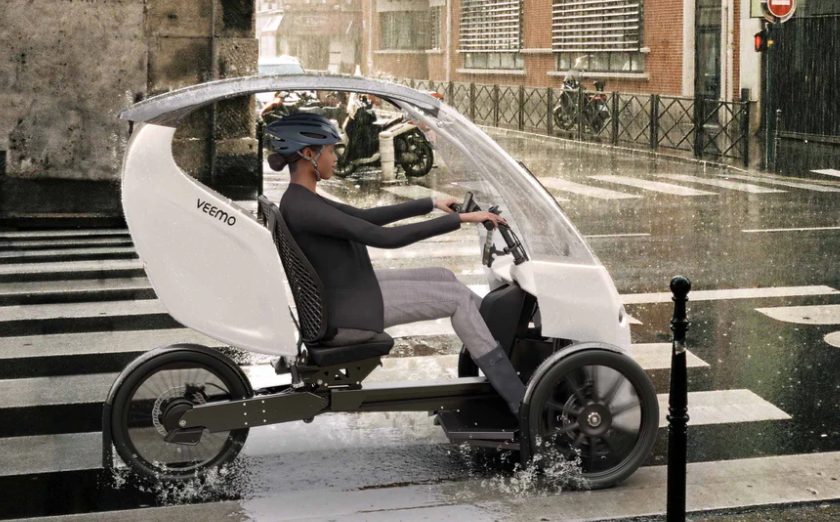
Stay tuned for updates as ENVO continues to innovate and shape the future of enclosed e-mobility.
Read more about the acquisition.







